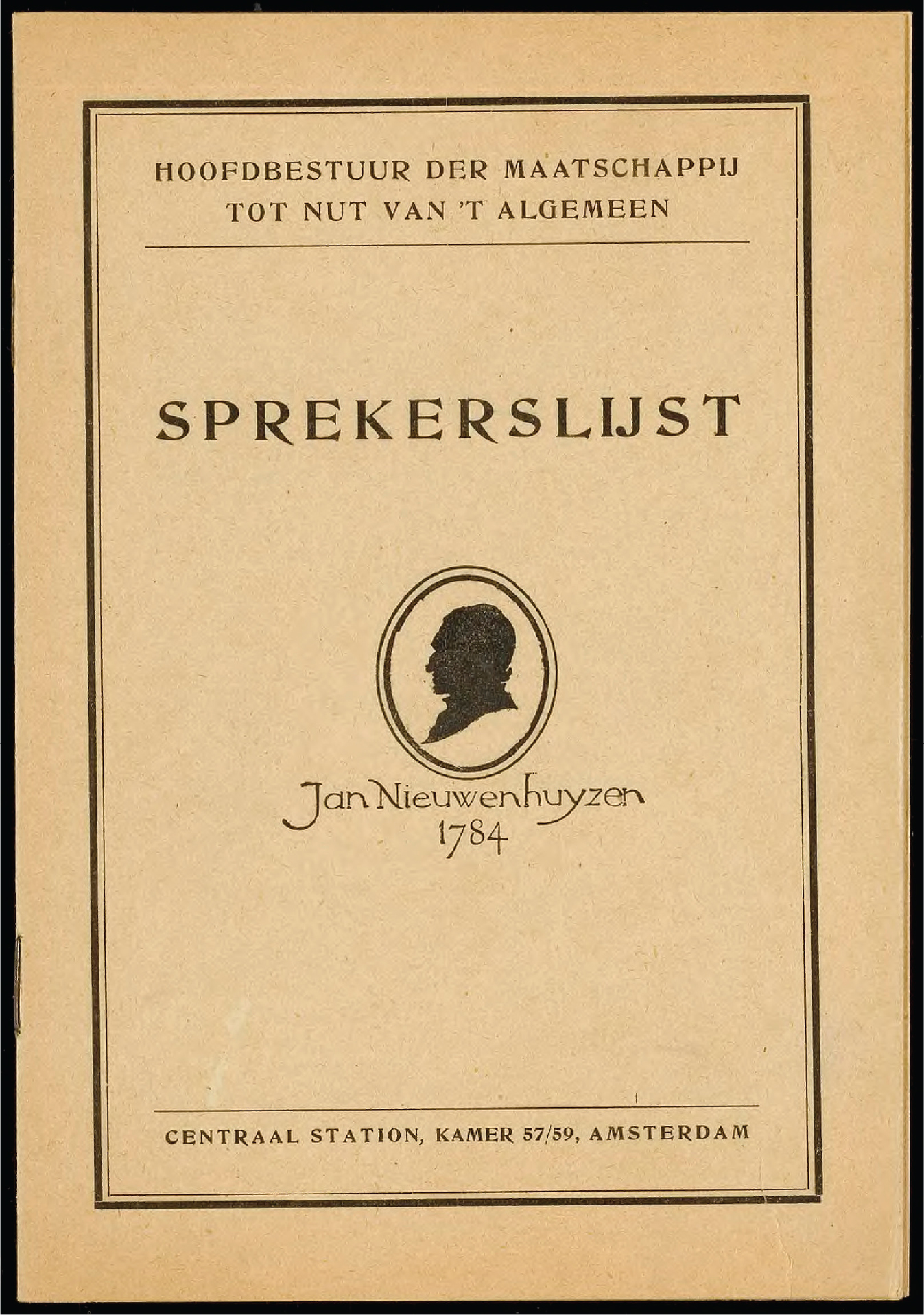Publications
Article: The Nutslezing and the lantern: Public lectures with image projection organized by the Maatschappij tot Nut van ‘t Algemeen in the first decades of the 20th century by Dulce da Rocha Gonçalves
Public lectures were a typical social event to nineteenth and twentieth century audiences in the Netherlands. Among these, the so-called Nutslezingen were particularly well-known, eliciting praise, criticism, and mockery. The wide use of term Nutslezing is confirmed by its inclusion in the Van Dale dictionary with defines it as “lecture for a department of ‘t Nut.” The Maatschappij tot Nut van ’t Algemeen, Society for the Common Benefit, was established in the Netherlands in 1784, and the Nutslezingen were one of their earliest and certainly the most recognizable of their activities. In 1900, by becoming a member of the recently founded Vereeniging tot het houden van Voordrachten met Lichtbeelden, Association for the Organization of Illustrated Lectures, the departments of ‘t Nut gained access to a collection of slide-sets and readings which they could use for their lectures. Using Frank Kessler’s concept of the educational magic lantern dispositif, this article will examine how the projection of lantern slides was incorporated in the Nutslezingen and how the historical stakeholders, audiences, speakers, local board members, and the national administration of ‘t Nut engaged with the technology, in theory and in practice.
—
Da Rocha Gonçalves, D.M. (2023). The Nutslezing and the lantern: Public lectures with image projection organized by the Maatschappij tot Nut van ‘t Algemeen in the first decades of the 20th century. TMG Journal for Media History, 26 (The Educational Dispositif): 1 – 29. DOI: 10.18146/tmg.828


